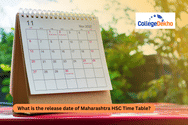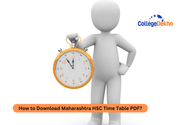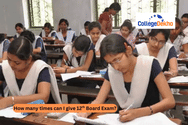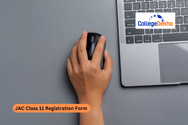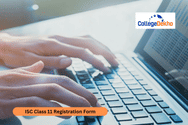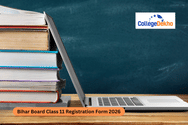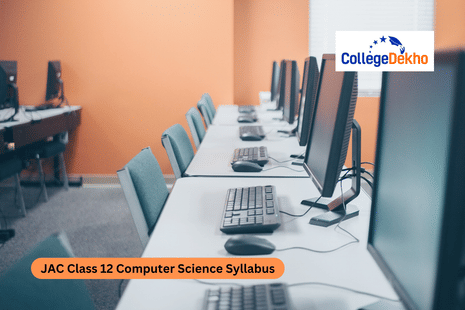

Never Miss an Exam Update
JAC Class 12 Computer Science Syllabus 2025-26 consists of 6 units. The practical syllabus is presented separately. The theory paper will be conducted for 70 marks, while the practical paper will be conducted for 30 marks. Some of the main units included in the syllabus are Welcome to the World of CCT, Workplace Productivity Tools, Communication Concepts and Skills, Web Publishing Technologies, Teamwork and Web-Based Collaboration Tools, and Emerging Technologies. You need to understand the syllabus in detail to get a good CGPA. Make sure to also understand the JAC Class 12 Exam Pattern 2026 to learn about the question paper pattern.
Do you want to download the JAC Class 12 Computer Science Syllabus 2025-26? Scroll down below to get the direct link:
JAC Class 12 Computer Science Syllabus 2025-26
A total of 6 units are included in the syllabus, which are to be studied individually. You can check out the syllabus from the table given below:
Unit | Title & Total Periods | Topics / Subtopics |
|---|---|---|
Unit I | Welcome to the World of CCT (Total Periods: 12) | 1.1 Expanding World of CCT: Career Opportunities • Commerce • Industry • Medicine • Scientific research • Governance • Entertainment • Other fields 1.2 Social, Ethical and Legal Matters • Effects on the way we work, socialise and operate • Cyber crime and its prevention • Cyber law: Indian IT Act • Intellectual property (software piracy, plagiarism, copyright and patent) • Software licensing (proprietary, free and open source) • Indian initiatives in open source software |
Unit II | Workplace Productivity Tools (Total Periods: 32) | 2.1 Electronic Databases • Need and use of data in daily life • Organising data, interpreting tables, graphs, maps, and charts • DBMS – creating, populating and managing databases • Querying databases using SQL • Relationships in databases and relational models • Web and desktop applications connected to databases • Security concerns and safeguarding data 2.2 Working with Multimedia Tools • Basics and applications of multimedia (presentations, instruction, games, etc.) • Installation and use of multimedia software • Capturing/manipulating image and sound • Animation, graphics, and sound techniques • Real-life applications of multimedia |
Unit III | Communication Concepts and Skills (Total Periods: 16) | 3.1 Computer Networks • Need, types (LAN, WAN), and topology (Star, Ring, Bus) • Hardware (cables, network cards, switches, ports) • Wireless networks (Infrared, Microwaves, Radio waves, Bluetooth, Wi-Fi) • Protocols (TCP/IP, HTTP, FTP) • Network software (servers: print, mail, firewall, web) • Applications (telephony, teleconferencing, messaging) • Testing, troubleshooting, and administering networks 3.2 Network Security • Risk assessment and assets (data, applications, systems) • Threats and attacks (identity theft, DoS, viruses) • Security measures (firewalls, encryption/decryption) • Prevention strategies |
Unit IV | Web Publishing Technologies (Total Periods: 36) | 4.1 Dynamic Websites • Database connectivity and dynamic webpages • Querying databases using SQL • Technologies – ASP, PHP, JSP • Case studies and building forms/queries 4.2 Applications of Dynamic Websites • Feature-rich websites • Online dictionaries and encyclopedias • Banking and e-commerce applications • ERP, CRM, CMS, LMS • Social networking, blogs, wikis |
Unit V | Teamwork and Web-Based Collaboration Tools (Total Periods: 16) | 5.1 Cross Cultural Collaboration • Globalisation and cultural collaboration • Hurdles and bridging digital divide • International collaboration 5.2 Web-Based Collaboration Tools • Social networking tools • Language translation tools • E-collaboration utilities and services |
Unit VI | Emerging Technologies (Total Periods: 8) | 6.1 Computer-Controlled Devices • Robotics – history, anatomy, degrees of freedom • Emotional and intelligent robots • Challenges to robotics • Machine intelligence and learning 6.2 Emerging Trends and Advances • Mobile computing • Bioinformatics • Biometrics • Speech recognition • Computer vision • Nanotechnology • Green computing |
JAC Class 12 Computer Science Practical Syllabus 2025-26
The practical exam will be conducted for 30 marks. You can check out the marking scheme for the practical paper from the table given below, along with the syllabus:
Component | Details / Activities | Marks |
|---|---|---|
1. Hands-on Experience | (a) Using SQL commands to design, develop, and use an RDBMS • Creating table using constraints (NULL, PRIMARY) • Deleting & modifying tables • Inserting, deleting, and updating records • Generating queries on single/multiple tables using clauses — ORDER BY, WHERE, GROUP BY, HAVING, DISTINCT • Generating query statements using functions — SUM, COUNT, MIN, MAX, AVG (b) Applications using Multimedia Tools • Creating a poster on any topic • Creating a movie with background music and animation • Creating a greeting card on any topic • Creating web pages • Integrating multimedia features in web pages (c) Blog Activity • Make a blog on a theme (e.g. Green Technology) • Organize an audio/video chat using free blog services | 15 Marks |
2. Project Work | • Develop a dynamic website using a database, web server, and programming language (e.g., Library Management System, e-Commerce, MIS, Social Networking, etc.) • Case study of a dynamic website | 5 Marks |
3. Practical File | • Print of 15 SQL commands with output • Documentation of the design of the dynamic website • Process documentation of blog development | 5 Marks |
4. Viva-Voce | Viva based on the syllabus covered in Class XII and project work | 5 Marks |
Also Read: JAC Board Class 12 Model Paper 2025-26
Make sure to read the syllabus in detail to understand the curriculum. Do not forget to pick up the model test papers after completing the syllabus for revision.
Are you feeling lost and unsure about what career path to take after completing 12th standard?
Say goodbye to confusion and hello to a bright future!

FAQs
The board has not made any changes in the computer science syllabus. The students can check the syllabus on the official website. They can download the PDF file and get all the details.
After completing the syllabus, students can start solving the previous year's question papers. This will introduce them to the types of questions and help them attempt all questions correctly in the board exam.
Students can refer to NCERT books for JAC class 12 computer science. These books have all the chapters in detail and provide in-depth knowledge to students.
JAC class 12 syllabus can be downloaded from the official website of JAC board. The board provides syllabus for each subject in the pdf format.
Students can divide the JAC class 12 Computer Science Syllabus into smaller units. They can divide the syllabus and set daily targets.
Was this article helpful?









